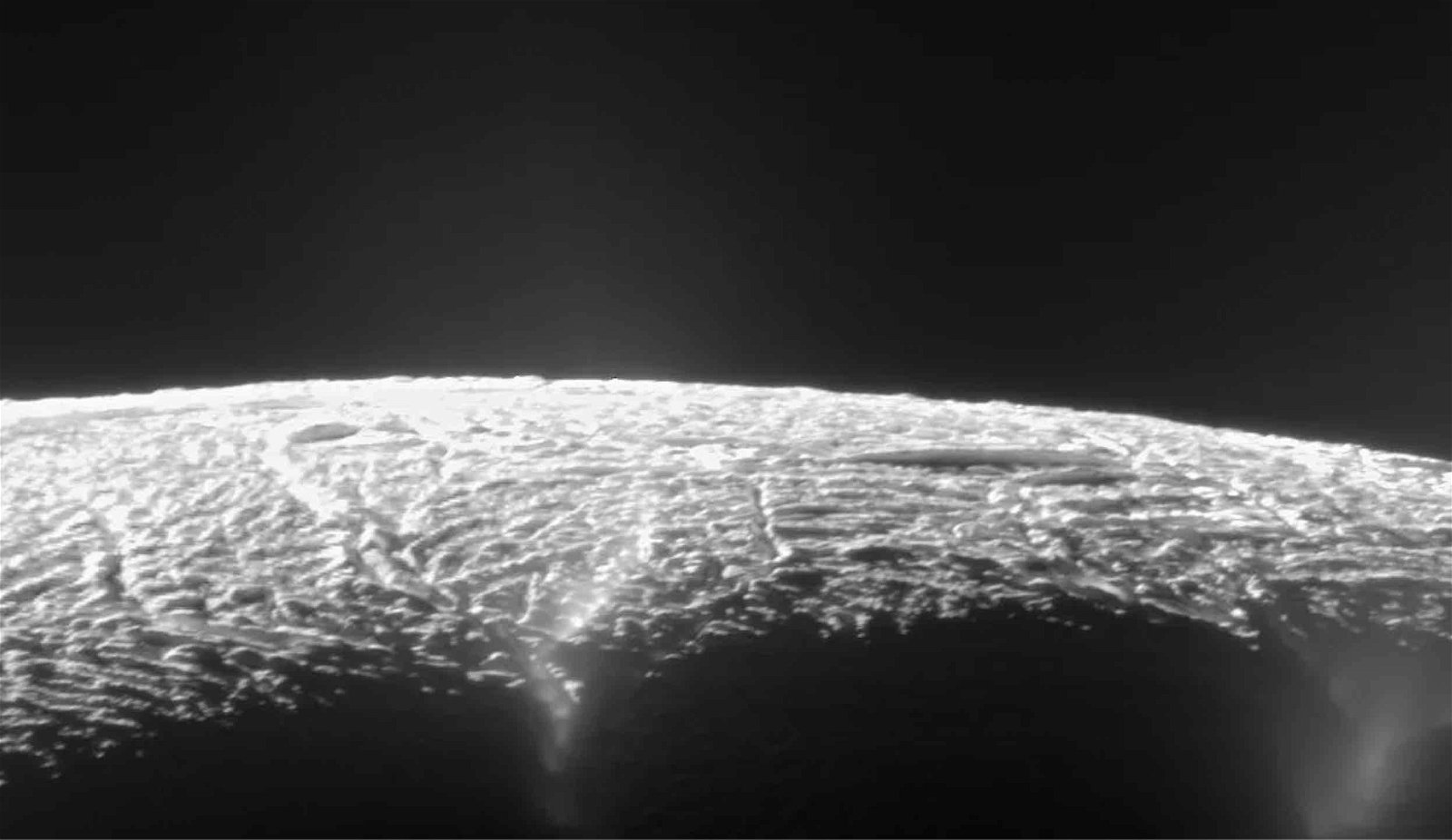NASA researchers say they have identified 17 potentially habitable icy worlds that are approximately Earth-sized, including two that reside in our cosmic backyard.
Similar to the icy moons of Jupiter (Europa) and Saturn (Enceladus) in our solar system, these worlds are believed to contain massive oceans underneath an icy outer shell, where a combination of tidal forces and radiation might enable the types of life found in the deepest parts of Earth’s oceans.
The researchers also said that these icy worlds may contain surface geysers that erupt some of that water into space, where human-made telescopes could scan those plumes for signs of extraterrestrial life.
Astrobiologists Add Icy Worlds to Their List
Dating back to the discovery of the first exoplanet in 1995, most efforts to search for life on other planets have focused on rocky worlds like Earth that orbit within their host star’s habitable zone, where temperatures would permit liquid water to exist on the planet’s surface. That’s because virtually all life on Earth uses liquid water, and Earth is the only place we have definitively found life.
For a long time, it was also believed that virtually all life forms required sunlight. However, recent discoveries of life forms in the deepest parts of Earth’s oceans that thrive in complete darkness have changed those calculations.
Dubbed “extremophiles,” these hardy organisms replace the light energy most life forms receive from the sun with thermal energy spewed by volcanic vents on the ocean floor. They also receive vital nutrients and other organic compounds from these vents, both of which are also critical to life.
These discoveries have led astrobiologists to redefine where they search for life outside Earth. Two of the most tantalizing targets are Europa and Enceladus. Scientists theorize that the tidal forces of their host planets and other moons combined with radiation energy generate enough internal heat energy that these icy moons may have oceans of seawater beneath their icy shells.
In 2005, NASA’s Cassini mission spotted geysers of water erupting from the surface of Enceladus, lending strong support to those theories. The space agency is even evaluating missions designed to fly spacecraft through those plumes and collect samples of the oceans below.


Now, NASA says that they have spotted 17 icy worlds outside our solar system that may also have the right orbits and dynamics to maintain an ocean of liquid water beneath an icy outer crust. And like Enceladus and Europa, they may also spew enough water into space for humans to search them for signs of life.
Measurements Find 17 Candidate Planets
To make their determination, the team parsed through the over 5,300 confirmed exoplanets to find the right candidates. The team searched for planets that were Earth-sized but less dense, increasing the chances they were made up of ice and water instead of rock. They also looked for planets that were much cooler than Earth, increasing the chances they were covered in ice.
Next, using measurements of the surface brightness and other topographical components of Enceladus and Europa as baselines, the team tried to improve the temperature estimates for each planet. Combined with the estimated heating of each planet, these calculations allowed the researchers to estimate the thickness of the icy shell covering each of these worlds.
Ultimately, the team found 17 candidates that not only fit the profile of Earth-sized icy worlds, but had just the right orbits to generate the internal heating required to have liquid water underneath the icy surface.
“Our analyses predict that these 17 worlds may have ice-covered surfaces but receive enough internal heating from the decay of radioactive elements and tidal forces from their host stars to maintain internal oceans,” said Dr. Lynnae Quick of NASA’s Goddard Space Flight Center in Greenbelt, Maryland. “Thanks to the amount of internal heating they experience, all planets in our study could also exhibit cryovolcanic eruptions in the form of geyser-like plumes.”
Telescopes Could Scan These Planets for Signs of Life
Among the most tantalizing of these 17 targets were planets Proxima Centauri b and LHS 1140 b. That’s because, at 4.2 and 48.8 light years away, respectively, they are the closest to Earth. This proximity means that both could be scanned by modern telescopes.
In their study, which was published in the journal Astrophysical Letters, the NASA team says the best telescopes could study these planets directly.
“Since our models predict that oceans could be found relatively close to the surfaces of Proxima Centauri b and LHS 1140 b, and their rate of geyser activity could exceed Europa’s by hundreds to thousands of times, telescopes are most likely to detect geological activity on these planets,” said Quick.
If one of these 17 candidate planets passes in front of its host star, the researchers also say that they might be able to spot geyser activity from Earth. If there is life within these planet’s subsurface oceans, the spectral signature of organic molecules and other chemical signatures associated with life on Earth could reveal the first signs of life outside of our planet.
“Since elements and compounds absorb light at specific “signature” colors, analysis of the starlight would let scientists determine the geyser’s composition and evaluate the exoplanet’s habitability potential,” they explain.
Christopher Plain is a Science Fiction and Fantasy novelist and Head Science Writer at The Debrief. Follow and connect with him on X, learn about his books at plainfiction.com, or email him directly at christopher@thedebrief.org.

